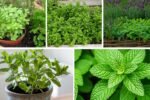Few flowers can rival the stunning charm of blue hydrangeas. With their large, ball-shaped blooms in shades ranging from pale sky blue to deep cobalt, they bring a cool, elegant beauty to gardens, borders, and even cut flower arrangements. Yet, many gardeners quickly realize that growing blue hydrangeas isn’t just about planting and waiting—they require the right soil, care, and maintenance to achieve and maintain their dazzling blue tones.
In this article, we’ll explore how to grow blue hydrangeas with brilliant color, covering everything from soil preparation and planting to care, pruning, and troubleshooting. Whether you’re a beginner or a seasoned gardener, these tips will help you cultivate vibrant, long-lasting blooms.
Understanding the Secret Behind Blue Hydrangeas
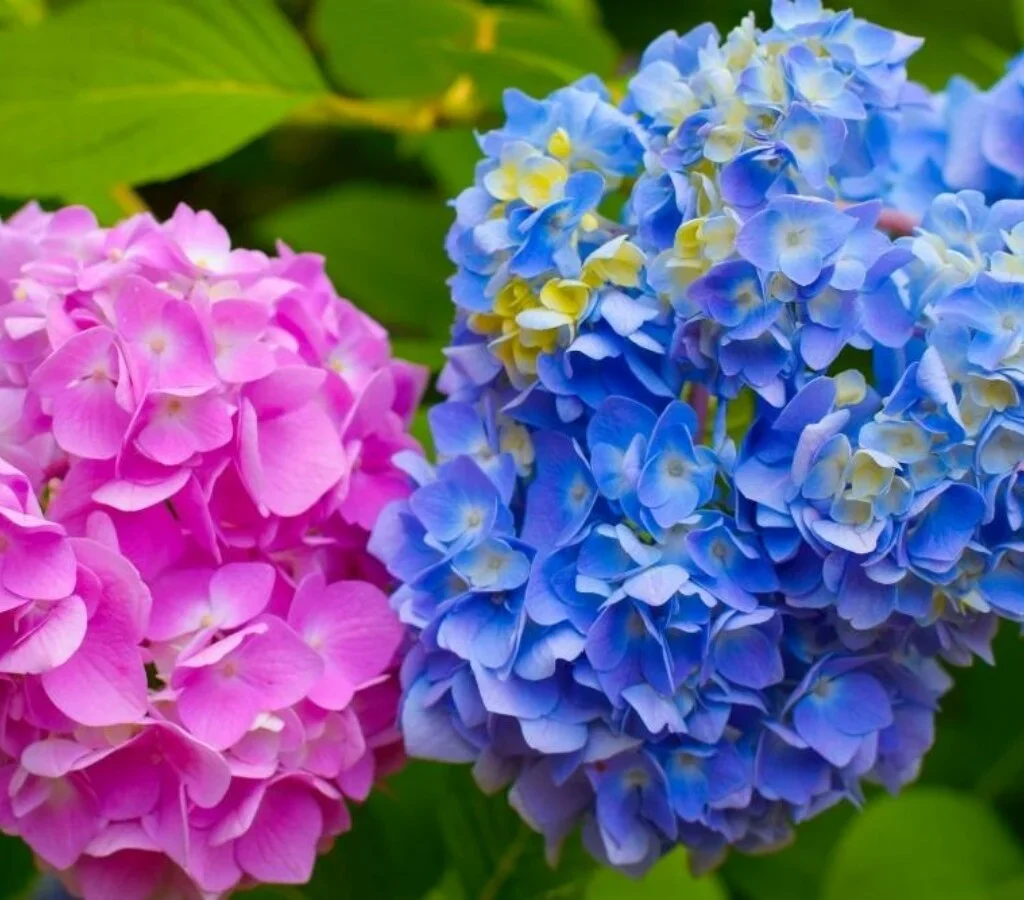
Before diving into planting techniques, it’s important to understand why hydrangeas turn blue. The secret lies in the soil’s pH level and aluminum availability.
- Acidic Soil (pH 5.0–5.5) → Produces blue flowers.
- Neutral to Alkaline Soil (pH 6.0–7.0+) → Produces pink or purple flowers.
When the soil is acidic, hydrangeas can absorb aluminum more efficiently, which directly influences the intensity of the blue color. If your hydrangea is blooming pink, it likely means your soil is too alkaline.
Choosing the Right Hydrangea Variety
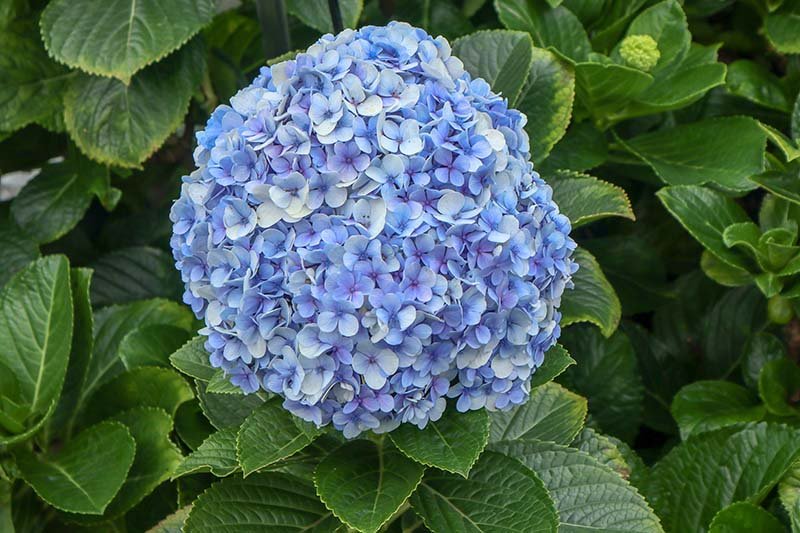
Not all hydrangeas can turn blue. The bigleaf hydrangea (Hydrangea macrophylla) is the variety most known for its ability to shift color based on soil pH. Within this group, you’ll find:
- Mophead Hydrangeas: Large, rounded blooms that are perfect for bold displays.
- Lacecap Hydrangeas: Flat clusters with small fertile flowers surrounded by showy petals, offering a delicate look.
Other hydrangea species, such as panicle (H. paniculata) or oakleaf (H. quercifolia), will not change color to blue, no matter the soil conditions.
Step 1: Preparing the Soil
Testing Soil pH
The first step to growing blue hydrangeas is to test your soil. Use a soil pH testing kit (available at garden centers or online). If your pH is above 6.0, you’ll need to lower it to make the blooms blue.
Adjusting Soil for Blue Blooms
- Lowering pH: Add aluminum sulfate or garden sulfur to acidify the soil.
- Natural Amendments: Mix in organic matter like pine needles, oak leaves, coffee grounds, or peat moss to gradually lower pH.
- Aluminum Access: Without available aluminum, hydrangeas won’t turn blue, even in acidic soil. If your soil lacks it, supplement with aluminum sulfate.
Tip: Always follow package instructions carefully when applying soil amendments to avoid damaging roots.
Step 2: Planting Blue Hydrangeas
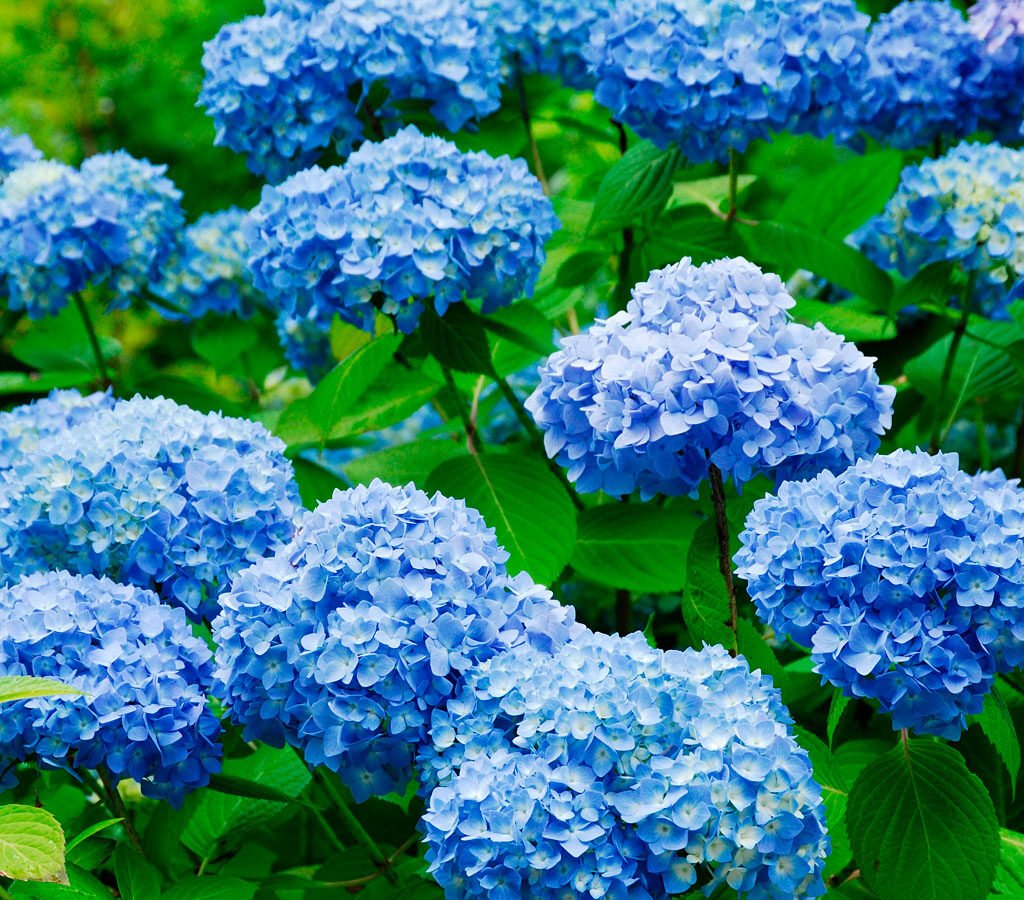
When to Plant
The best time to plant hydrangeas is in spring or fall, when temperatures are mild and the plant can establish roots without heat stress.
Where to Plant
- Sunlight: Hydrangeas prefer morning sun and afternoon shade. Too much direct sun can scorch the blooms, while too little can reduce flowering.
- Soil: Loose, well-draining, and rich in organic matter.
- Spacing: Allow at least 3–4 feet between plants to ensure good airflow and prevent disease.
How to Plant
- Dig a hole twice as wide and just as deep as the root ball.
- Mix compost or peat moss into the soil.
- Place the plant so the top of the root ball is level with the ground.
- Backfill, gently firming the soil.
- Water deeply.
Step 3: Watering and Fertilizing
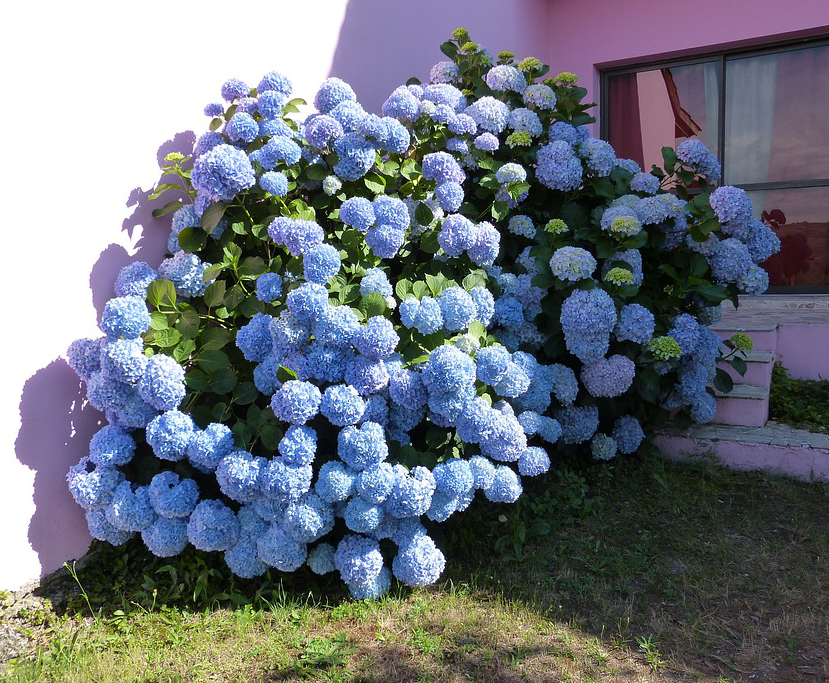
Watering
Hydrangeas love moisture. To keep your blue blooms vibrant:
- Water 1 inch per week, increasing during hot or dry spells.
- Keep soil evenly moist but not waterlogged.
- Mulch around the base with bark, pine needles, or compost to retain moisture and regulate temperature.
Fertilizing
- Use a balanced fertilizer (10-10-10) in spring for overall health.
- For blue blooms, switch to fertilizers low in phosphorus (the middle number), since phosphorus blocks aluminum uptake. Look for formulations like 25-5-30 or similar.
Step 4: Pruning and Maintenance
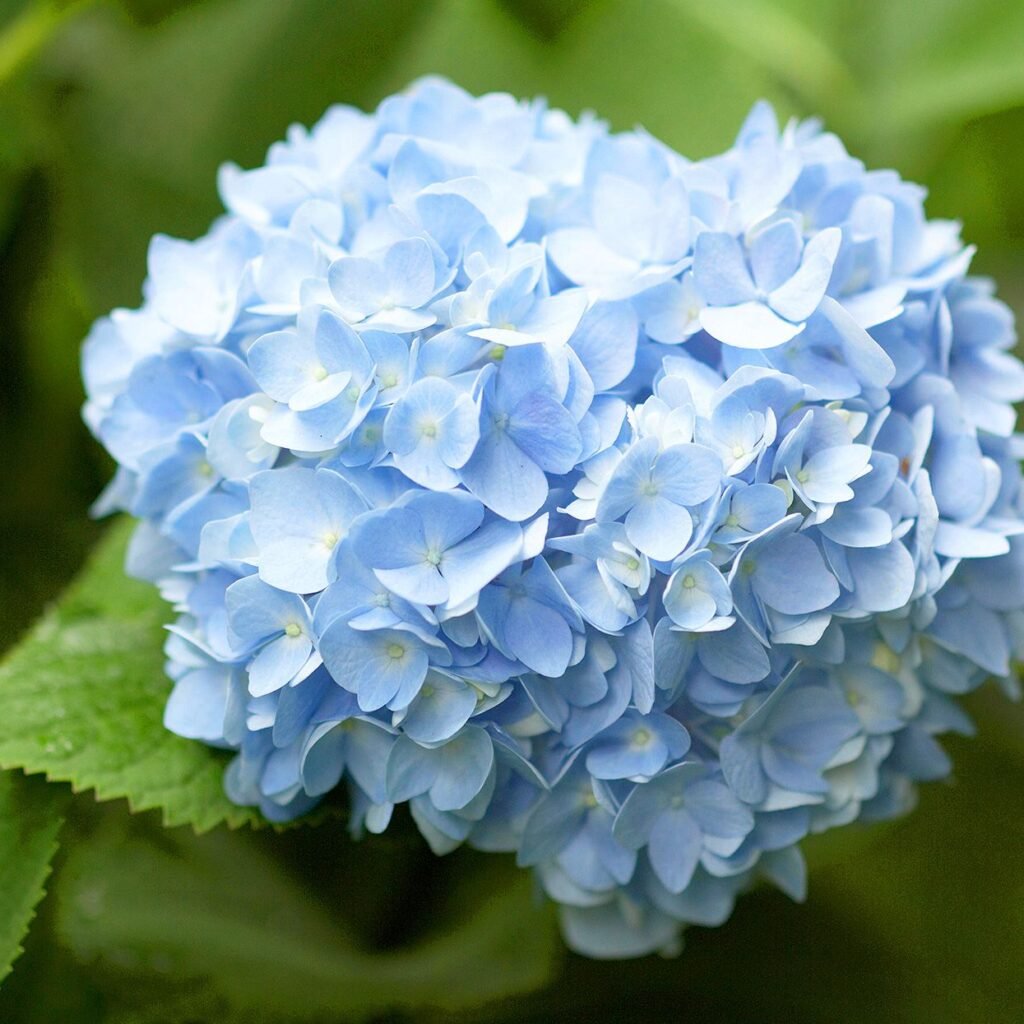
Pruning hydrangeas can be tricky, especially for bigleaf varieties.
- When to Prune: Bigleaf hydrangeas bloom on old wood (last year’s stems). Prune right after flowering in summer, before buds for the next year form.
- How to Prune: Remove spent blooms and dead or weak stems. Avoid heavy pruning unless necessary.
- Winter Protection: In colder climates, mulch heavily around the base and cover plants with burlap to protect flower buds.
Step 5: Encouraging Brilliant Blue Blooms
To keep your hydrangeas vividly blue year after year:
- Check Soil pH Annually: Adjust as needed to keep it in the 5.0–5.5 range.
- Apply Aluminum Sulfate: Dissolve 1 tablespoon per gallon of water and apply monthly during the growing season.
- Use Acid-Loving Plant Fertilizers: Products made for azaleas or rhododendrons work well.
- Mulch with Organic Matter: Pine needles or shredded leaves help maintain acidity.
Common Problems and Solutions
1. Flowers Turning Pink
- Cause: Soil too alkaline or lacking aluminum.
- Fix: Lower soil pH with garden sulfur or aluminum sulfate.
2. Wilting Leaves
- Cause: Heat stress or underwatering.
- Fix: Water deeply, mulch to retain soil moisture, and provide afternoon shade.
3. No Blooms
- Cause: Pruning at the wrong time, winter damage, or excessive nitrogen.
- Fix: Prune right after flowering, protect buds in winter, and use balanced fertilizer.
4. Leaf Spots or Powdery Mildew
- Cause: Poor air circulation or overwatering.
- Fix: Space plants properly, water at the base (not overhead), and remove infected leaves.
Companion Plants for Blue Hydrangeas
Pairing hydrangeas with complementary plants enhances their beauty:
- Hostas: Their lush foliage creates contrast.
- Ferns: Add texture and thrive in similar conditions.
- Astilbes: Their feathery flowers complement hydrangea blooms.
- Japanese Maple: Offers a striking backdrop with colorful leaves.
Using Blue Hydrangeas Beyond the Garden
Blue hydrangeas aren’t just for garden displays—they’re equally stunning indoors.
- Cut Flowers: Fresh hydrangea blooms make gorgeous bouquets. Cut in the morning, place stems in cool water, and change water daily.
- Dried Flowers: For lasting beauty, let blooms partially dry on the plant before cutting and hanging upside down in a dry, shaded space.
Final Thoughts
Growing blue hydrangeas with brilliant color requires more than planting and watering—it’s about understanding the delicate balance of soil chemistry, aluminum availability, and proper care. By keeping your soil acidic, feeding wisely, watering consistently, and pruning carefully, you can enjoy breathtaking blue blooms year after year.
With a little effort and attention, your garden can be transformed by the serene, cooling beauty of blue hydrangeas. Whether in borders, containers, or as part of a landscape design, these stunning flowers will reward you with their timeless elegance season after season.




